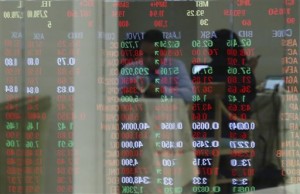Dutch financial giant ING has tempered its growth outlook for the Philippines this year to 6.3 percent from 6.8 percent following a disappointing second quarter GDP (gross domestic product) report.
The bank, however, stressed the slowdown was not worrisome as domestic demand remained robust.
Despite slowing growth, ING expects the Bangko Sentral ng Pilipinas (BSP) to continue its interest rate-tightening cycle. ING sees another 25-basis point hike in the BSP’s overnight borrowing rate in the fourth quarter, to be followed by another 50-basis point increase in 2019.
“The BSP is not done with raising rates. Inflation has yet to peak, as implied by BSP’s upward revision of this year’s and next year’s inflation forecasts to 4.9 percent (from 4.5 percent) and to 3.7 percent (from 3.3 percent), respectively,” ING senior economist Joey Cuyegkeng said in a research note.
As the country’s seven-month inflation average was only 4.5 percent, he said the BSP’s inflation forecast for 2018 implied that inflation would still peak in the coming months and that it could average 5.5 percent in the next five months.
“Inflation expectations are unlikely to stabilize anytime soon. Further monetary tightening would be needed to ensure that such expectations be well-anchored,” Cuyegkeng said.
On Thursday, the BSP raised its overnight borrowing rate by 50 basis points, in line with market consensus, to 4 percent.
Meanwhile, Cuyegkeng said domestic demand remained strong, having expanded by 10 percent in the second quarter.
The 6-percent GDP growth in the second quarter underperformed the market consensus of 6.6 percent and the government’s target range of 7-8 percent.
ING had expected GDP growth to slightly pick up from last year’s 6.7 percent to 6.8 percent. Economic managers said the slower-than-expected growth in the second quarter was partly due to the impact of the shutdown of tourist hotspot Boracay Island and the suspension order on a number of mining firms.
Business and government spending both accelerated along with investment in construction and durable equipment, on the back of infrastructure spending and capacity expansion that was consisted with strong importation of capital goods in the second quarter, Cuyegkeng said.
However, he noted that year-on-year growth in household spending had moderated to 5.6 percent from 6 percent in the same period last year.
“High inflation and weak agriculture production (up by only 0.2 percent year-on-year in second quarter from 6.3 percent last year) weakened purchasing power and restrained household spending but the 6-percent growth is still respectable,” he said.
The moderation in household spending is also seen in slower manufacturing growth of 5.6 percent in the second quarter from 8 percent last year.


